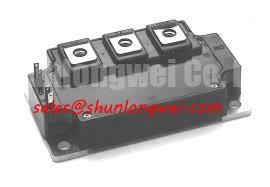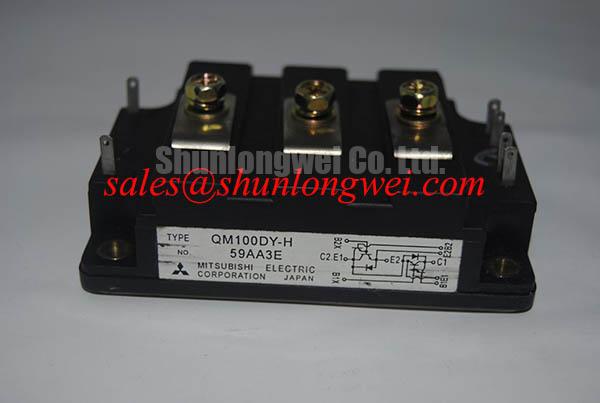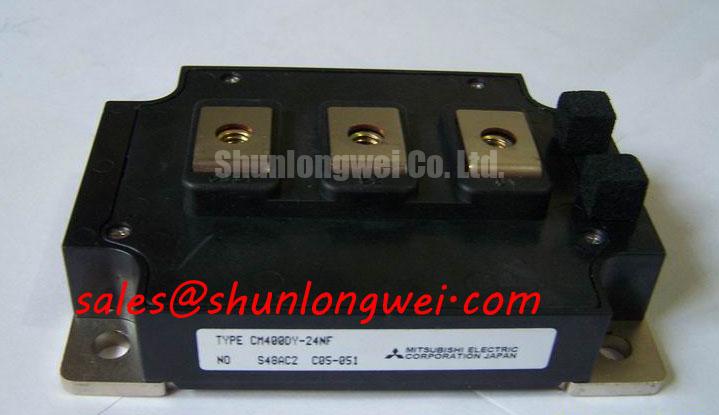
1. What is an IGBT?
One of the most important components in power electronics is the IGBT.
The so-called IGBT (Insulated Gate Bipolar Transistor) is a composite full-regulated-voltage-driven-power semiconductor device composed of BJT (Bipolar Junction Transistor) and MOS (Insulated Gate Field Effect Transistor), which has its own The feature of shutdown.

To put it simply, it is a non-on-off switch. The IGBT does not have the function of amplifying the voltage. It can be regarded as a wire when it is turned on and an open circuit when it is disconnected. IGBTs combine the advantages of both BJT and MOSFET devices, such as low drive power and reduced saturation voltage.
The IGBT module that we usually use in practice is a modular semiconductor product that is packaged by IGBT and FWD (freewheeling diode chip) through a specific circuit bridge. It has the characteristics of energy saving, convenient installation and maintenance, and stable heat dissipation.
2, the traditional power MOSFET
In order to understand the IGBT, I will first talk about the structure of the Power MOSFET. The so-called power MOS is to withstand high power, in other words, high voltage, high current. We combine the general low-voltage MOSFET to explain how to change the structure to achieve high voltage and high current.
1) High voltage: If the general MOSFET has high voltage of Drain, it will easily lead to breakdown of the device. The general breakdown channel is the other three ends of the device (S/G/B), so to solve the high voltage problem, you must block the three. end. The Gate end can only rely on the field oxygen pad to isolate the drain-to-drain distance (Field-Plate), while the Bulk-side PN junction breakdown can only reduce the concentration on both sides of the PN junction, and the most annoying is to the Source end, which is A long drift region is required as the drain series resistor divider so that the voltage drops across the drift region.
2) High current: The channel length of a general MOSFET is determined by Poly CD, and the channel of the power MOSFET is controlled by the difference of the junction depth of the two diffusions, so as long as the process is stable, it can be made small and is not affected by light. The accuracy of the engraving. The current of the device depends on W/L, so if you want to get a large current, you only need to increase W.
So the above Power MOSFET is also called LDMOS (Lateral Double diffusion MOS). Although such a device can achieve high power requirements, it still has its inherent disadvantages. Since its source, gate, and drain are all on the surface, the drain and source need to be pulled long, which wastes chip area. And because the device is on the surface, the complexity is increased and isolation is required if the device is to be connected in parallel. So later developed VDMOS (Vertical DMOS), the drain is uniformly placed on the back of the Wafer, so that the drift zone length of the drain and source can be controlled by the backside thinning, and such a structure is more conducive to the between the tubes. The parallel structure achieves high power. However, the LDMOS structure is still used in the BCD process in order to be compatible with CMOS.
Let me talk about the development and evolution of VDMOS. The earliest VDMOS is to directly put the LDMOS Drain on the back through the back thinning, Implant, metal evaporation, he is the legendary Planar VDMOS, it and the traditional LDMOS The challenge is the back side process. But its advantage is that the front process is compatible with traditional CMOS processes, so it is still alive. However, this structure has the disadvantage that its channel is transverse to the surface and the area utilization is still not high enough.
Later, in order to overcome the shortcomings of Planar DMOS, VMOS and UMOS structures were developed. Their approach was to dig a groove in the surface of Wafer and change the channel of the tube from the original Planar to the vertical along the wall. It was a clever idea. But a pie always matches a trap (IC manufacturing is always trade-off). The inherent disadvantage of this structure is that the slot is too deep and the electric field is concentrated, resulting in breakdown, and the process is difficult and costly. The bottom of the groove must be absolutely routing, otherwise it will easily break down or create a lattice defect of stress. However, its advantage is that the number of crystal saturation is much larger than the original, so more transistors can be connected in parallel, which is more suitable for applications with low voltage and high current.
There is also a classic thing called CoolMOS, everyone learn google yourself. He should be considered the highest voltage of Power MOS, and can reach 1000V.
3. Structure and principle of IGBT

The Power MOSFET is described above, and the IGBT is essentially a field effect transistor. It is structurally very close to the Power MOSFET. A P+ layer is added to the drain electrode on the back side, which we call the Injection Layer. The Power MOSFET described above is basically a traditional MOSFET. It is still a single carrier (multi-sub) conductive, so we have not yet exerted its ultimate performance. So later, a new structure was developed. How can we not inject holes from the drain side in addition to the MOSFET's own electrons when the Power MOSFET is turned on? So naturally, a P+ injection layer is introduced at the drain end, and a P+/N-drift PN junction is added from the structure, but it is positively biased, so it does not affect the conduction but increases the null. The hole injection effect, so its characteristics are similar to BJT. There are two kinds of carriers involved in conduction. So the original source becomes Emitter, and Drain becomes Collector.
From the above structure and the equivalent circuit diagram on the right, it has two equivalent BJTs linked back to back. It is actually a PNPN Thyristor. This thing is not what we deliberately do, but the structure is generated. I wrote an article about Latch-up five months ago. The most terrible thing about this structure is the Latch-up. The key to controlling Latch-up is to control Rs, as long as α1+α2<1 is satisfied.
In addition, such a structural advantage is to improve the current drive capability, but the disadvantage is that when the device is turned off, the channel is quickly turned off without multiple sub-currents, but the Collector (Drain) side continues to have minority hole injection. Therefore, the current of the entire device needs to be slowly turned off (tailing current), which affects the turn-off time and operating frequency of the device. This is a taboo for switching devices, so a structure is added to add an N+buffer layer between P+ and N-drift. This layer is used to allow the device to inject holes from the Collector when it is turned off. It is quickly compounded in the N+ buffer layer to increase the turn-off frequency. We call this structure PT-IGBT (Punch Through type), and the original NPT-IGBT without N+buffer.
In general, NPT-IGBT is higher than Vce(sat) of PT-IGBT, mainly because NPT is a positive temperature coefficient (P+ substrate is thinner and less hole injection), and PT is a negative temperature coefficient (because P substrate is thicker) Therefore, the hole injection is more caused by the triode base region modulation effect, and Vce (sat) determines the switch loss, so if the same Vce (sat) is required, the NPT must increase the thickness of the drift, so Ron has increased.
4, IGBT manufacturing process

The process front of the IGBT is not worse than the standard BCD LDMOS, but the back is more difficult:
1) Back thinning: generally required 6~8mil, this thickness is difficult to grind and easy to chip.
2) Back injection: Both are ground to 6~8mil, and also need to hit High current P+ implant >E14's dose, it is easy to be fragmented, and there must be special equipment dedicate. Even the fourth generation has two Hi-current injections, which is the limit.
3) Back cleaning: This general SEZ is fine.
4) Back metallization: This can only be done by metal evaporation process, Ti/Ni/Ag standard process.
5) Back Alloy: The main consideration is that the wafer is too thin and easy to warp the pieces.
5, new technology of IGBT
1) Field cut-off FS-IGBT: No matter whether the PT or NPT structure can finally meet the requirements of infinite high power, to achieve high power, it is necessary to lower Vce (sat), that is, reduce Ron. Therefore, it is necessary to reduce the thickness of the N-drift, but this N-drift thickness is again constrained by the electric field of the off state. Therefore, if you want to reduce the thickness of the drift, you must let the cut-off electric field drop before the channel. Therefore, it is necessary to introduce an N+ field stop layer (FS) between the P+ injection layer and the N-drift. When the IGBT is in the off state, the electric field is rapidly reduced to 0 in the cut-off layer to achieve the purpose of termination, so we can Further reducing the N-drift thickness reduces Ron and Vce. Moreover, this structure is very similar to the N+ buffer structure, so it also has the effect of PT-IGBT to suppress the tailing current in the off state to increase the closing speed.
The question is, what is the difference between this and the N+ buffer of the PT-IGBT? In fact, the production process is different. The PT-IGBT is made with two layers of EPI, which is the first layer of ~10um N+ buffer on the P+ substrate, and then the second layer ~100um of N-Drift. This cost is very high! In contrast, the FS-IGBT is based on the NPT-IGBT directly on the back side of the high-concentration N+ cut-off layer, the cost is relatively low, but the challenge is how to achieve no fragmentation under thinner thickness.
2) Anode shorting (SA: Shorted-Anode): Its structure is that the N+ collector is intermittently inserted into the P+ collector, so that the N+ collector directly contacts the field stop layer and serves as the cathode of the PN diode, while P+ continues to do its FS. – The collector of the IGBT, which has enhanced current characteristics and changes the cost structure, since there is no need to co-package the anti-parallel diodes. Experiments have shown that it can increase the saturation current and reduce the saturation pressure drop (~12%).
6, the main I-V characteristics of IGBT
IGBT You can use it as a MOSFET in series with a PiN diode, or as a wide base PNP driven by a MOSFET (Darlington structure), the former can be used to understand its characteristics, the latter is his principle. It seems that the IV curve of a MOSFET has moved backwards (>0.7V) because the channel turn-on current must satisfy the drift region current and drift region resistance product multiplied by 0.7V to make the P+ substrate and N-drift The PN junction is conducting, so that it can work, otherwise the channel can not work.
7. Why should we pay attention to IGBT?
IGBT is the core device for energy conversion and transmission, and is the "CPU" of power electronic devices. The use of IGBT for power conversion can improve the efficiency and quality of power consumption, and is characterized by high efficiency, energy saving and environmental protection. It is a key supporting technology for solving energy shortage problems and reducing carbon emissions.
IGBT Manufacturer
IXYS Hitachi Infineon Mitsubishi Powerex FUJI ELECTRIC Sanyo Toshiba intersil
